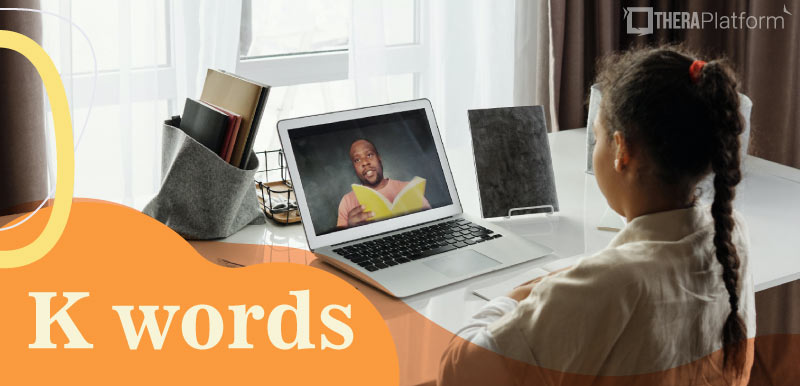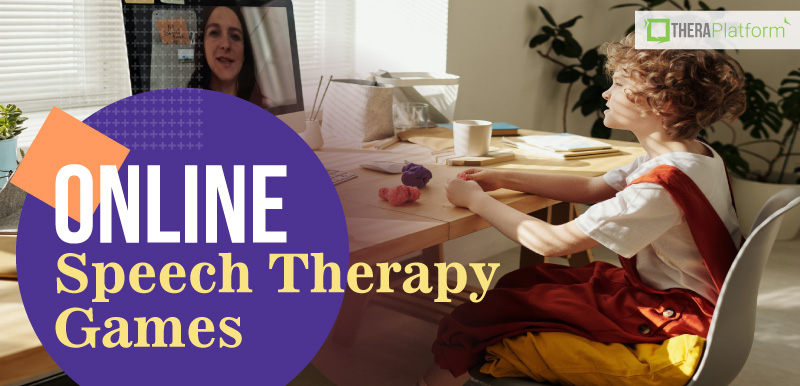P words

P-words like park, patty cake, puzzle, pajamas, potty and puppy can be really important in a child’s life. So it's important for kids to be able to articulate them, and according to norms, children can typically produce the /p/ sound by 2-3 years-old.
At 3 years old, a child’s speech is expected to be at least 75% intelligible to a stranger. If you’re a Speech-Language Pathologist working on improving a young child’s speech intelligibility, the /p/ sound is a great place to start.
/P/ is a bilabial plosive sound, meaning it’s made when the lips come together and then a burst of air is released. What makes it the perfect early developing sound to work on with young children who have an articulation disorder is that it’s very visual.
Young children who are still developing receptive language skills may benefit from the ease of being able to see how others make the /p/ sound, and the simple mouth movements involved in producing it.
It’s critical to find motivating activities for targeting the /p/ sound in teletherapy or in-person speech therapy sessions. It’ll help keep even younger children engaged so they complete multiple trials for practice, and attentive to verbal and visual cues.
Here are some of the best activities and techniques for teaching the /p/ sound. We’ve also got a word list at the end of /p/ words, organized from simple to complex, and in all word positions.

Download our Ultimate Articulation Guide

Exercise #1: Use tissue paper for visual feedback
This exercise for eliciting the /p/ sound in speech therapy is a fun one that’ll show children the power of moving their mouth a certain way.
- Instruct the child to close their mouth, making sure their lips are held tightly together. Model how you do this with your mouth.
- Next, put a small piece of colorful tissue paper in front of the child’s lips, leaving just a small amount of space there. Ask the child to push their lips open, releasing a big burst of air that’ll make the tissue paper “dance”.
- Turn this into a creative craft by helping your client glue the piece of tissue paper onto a piece of paper each time after they practice the /p/ sound. The result will be a colorful collage, and lots of trials of your target sound.
Tip: You can also do this activity using a tissue, thin scarf, or cotton ball on a table. Any of these will move if the child correctly produces the /p/ sound, giving them the reinforcement and feedback that they made their sound correctly.
Exercise 2: Popping bubbles
Bubbles are loved by children of all ages, and they’re perfect for working on articulation of the /p/ sound!
Blow bubbles or use a bubble machine and encourage the child to say /p/ each time you pop a bubble. Once the child seems to have mastered the sound in isolation, encourage him or her to practice it in the initial and final position of a simple word, like “pop” during this activity.
Seeing your client over teletherapy? There are tons of fun bubble pop games available online that you can play during therapy by utilizing your screen sharing feature.
Curious George Bubble Pop by PBS Kids and Tingly Bubble Shooter by ABCya are a few favorites.
Push, pull, pass, pick, play, and please are some other initial /p/ words that are perfect to incorporate into a bubble activity.
Exercise 3: Use visual cues for /p/ during book reading
There are so many great children’s books that include multiple /p/ words. Choose one to read during your session, asking the child to imitate some of the target words along the way.
- If You Give a Pig a Pancake by Laura Numeroff
- The Three Little Pigs
- The Princess and the Pea
- Pat the Puppy by Edith Kunhardt Davis
To teach your client how to produce the /p/ sound, visuals can be very helpful. Using one hand, put your fingers together, then quickly separate them to show how your mouth closes and then releases air to make this sound.
Tap on your lips as you model the /p/ sound, and move your finger away from your mouth to draw attention to how the air gets released from your mouth.
Start 30-day Free Trial and explore TheraPlatform. HIPAA Compliant Video and Practice Management Software for Therapists.
Exercise #4: Have a painting party
Work on the /p/ sound by incorporating a painting activity into your session.
If you’re working with the client virtually, this is an easy one for a parent to set up with materials that they likely already have at home. Demonstrate the /p/ sound as you start with some auditory bombardment.
Ask the child to watch your mouth as you say several words starting with this sound such as:
- Paint
- Pretty
- Pink
- Purple
- Pick
Next, ask the child to imitate those words before painting together. Encourage the child to paint something that starts with /p/ such as a puppy, person, or pig.
Teletherapy tip: You can use the Paint application on your computer to do this activity if you are seeing your client over teletherapy.
Exercise #5: Play /p/ Games
Another way to target articulation of the /p/ sound is by engaging your client in some fun games that involve a lot of words containing this sound.
Pop the Pig is a popular game that can be adapted for a variety of ages. Ants in the Pants is another simple game that children as young as 3 can play. Finally, Pancake Pile Up is a favorite of many SLPs.
Once the child masters /p/ in isolation, syllables, and the initial position of words, try seeing if he or she can produce it in the medial or final position of words. You can incorporate games such as Hungry Hungry Hippos.
Word List for /p/
Initial Position
1-Syllable
Pie | Peas | Pig | Pen | Park |
Pants | Pack | Pass | Pat | Pear |
Peach | Pick | Play | Pop | Pour |
Push | Pull | Put | Pool |
Multisyllabic
Picnic | Playdough | Playground | Picture | Peanut |
Pickle | Penguin | Pumpkin | Puzzle | Pudding |
Puppet | Party | Pizza |
Medial Position
Paper | Bumpy | Puppet | Puppy | Open |
Happy | Apple | Hippo | People | Purple |
Airplane | Applesauce | Diaper | Grandpa | Helicopter |
Napkin | Sleepy | Spaghetti | Toothpaste |
Final Position
1-Syllable
Map | Chip | Clap | Cup | Ship |
Wipe | Up | Top | Tape | Stop |
Sleep | Chip | Beep | Grape | Help |
Multisyllabic
Ketchup | Hula hoop | Envelope | Asleep | Gingersnap |
Potato chip | Telescope | Flytrap | Championship | Tulip |
SLPs working with individuals who have an articulation disorder or phonological disorder like pronouncing the /p/ sound can utilize TheraPlatform for helpful resources. You can use TheraPlatform to conduct speech teletherapy sessions and have access to their suite of speech therapy games under the ProPlus plan.
Additionally, several aspects of your practice, from documentation to financial organization and scheduling can be managed through TheraPlatform. TheraPlatform, an all-in-one EHR, practice management and teletherapy tool was built for therapists to help them save time on admin tasks. Consider starting with a free trial of TheraPlatform today. No credit card required. Cancel anytime.
More Resources
- K words
- R words
- Therapy resources and worksheets
- Therapy private practice courses
- Ultimate teletherapy ebook
- The Ultimate Insurance Billing Guide for Therapists
- The Ultimate Guide to Starting a Private Therapy Practice




